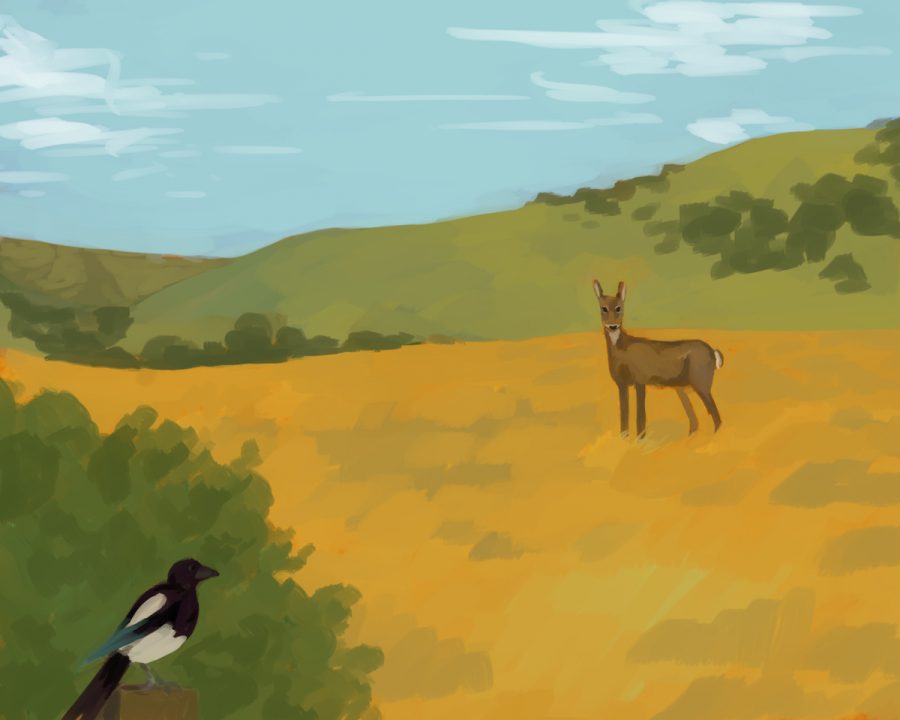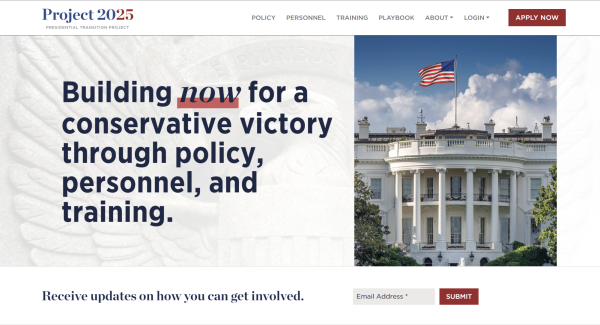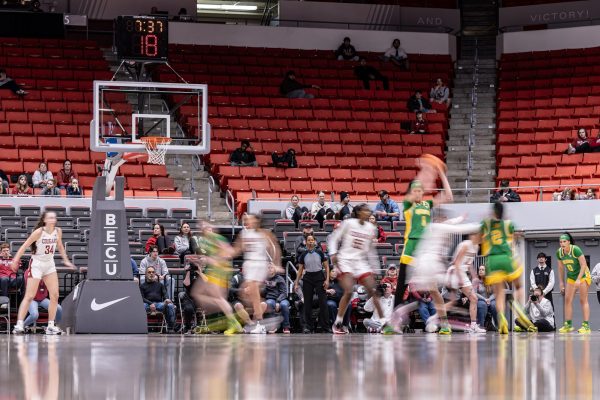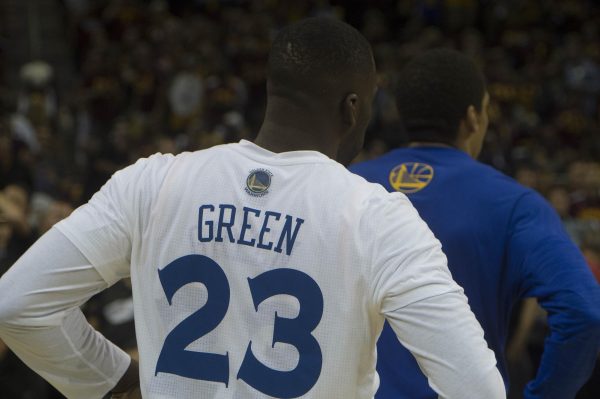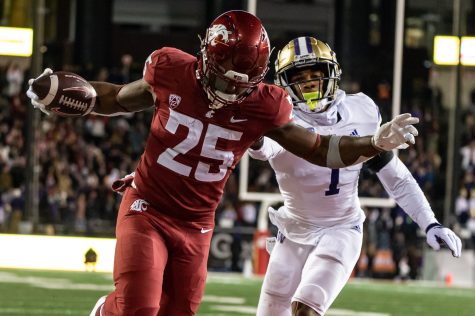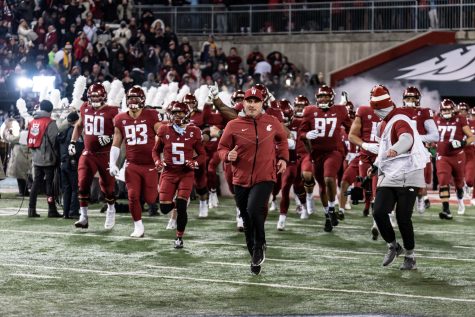OPINION: Support the Land, Water Conservation Fund
Washingtonians would benefit from federal bill that protects wild lands
The LWCF is the best way to ensure that everyone can make use of America’s wild lands, now and forever.
June 3, 2020
Originally created by Congress in 1964, the Land and Water Conservation Fund helps ensure present and future generations of Americans have opportunities to enjoy our nation’s outdoors. The program funds projects that expand and maintain public access to federally-managed land, which is held for the benefit of everyone in the U.S. If fully funded, LWCF is designed to put $900 million annually toward access projects like boat ramps, trailhead maintenance and riverside parks.
All the money for LWCF is derived from taxable income that makes up a small percentage of profit garnered by offshore oil operations. That may seem like an odd marriage, oil and environmental conservation — but in actuality, it’s pretty straightforward.
Twenty-eight percent of U.S. land is public, including the shoreline where the offshore drilling takes place. In other words, it is true what we sang in my elementary school choir: “This land is your land, this land is my land.” And for over 50 years, thanks to LWCF, anyone who wanted to drill holes and extract from our offshore birthright would legally have to give back in some meaningful way. Public access and opportunity have and continue to be deemed most meaningful.
LWCF, a bipartisan creation, was reauthorized by the United States Senate in March 2019 as part of a public-lands package that gained nearly unanimous support (the Senate voted in its favor 92-8). The bill was called the John D. Dingell, Jr. Conservation, Management and Recreation Act, S.47. Such overwhelming, bipartisan support within the senate was refreshing, even to those who followed the bill closely. Most of the senators must have had choir at their elementary schools, too.
Reauthorization of LWCF seemed like a major win for the American people, and it was. There was a brief moment of celebration for conservation organizations that had worked to raise awareness around LWCF. Those activist groups didn’t pause to celebrate for long.
That’s because a great deal of the money authorized for LWCF still wasn’t allocated and had no chance of funding those previously mentioned access, expansion and maintenance projects. The LWCF has a built-in funding mechanism, which is to tax profits on resource extraction on public land, and the annual $900 million designated to go to public projects has been permanently authorized via S.47.
However, the funding for LWCF has a consistent history of being diverted. In the seven-year span between 2010 and 2017, only about two percent of the annual $900 million was actually authorized by Congress for spending on LWCF.
In May 2019, Montana Sen. Steve Daines requested $600 million from the Senate Appropriations Committee to be spent on LWCF. $600 million is a hefty pile of money, and it is a vast increase from the seven-year average of around $1 million the program had been receiving annually prior to all the public attention. $600 million is not $900 million though, and two-thirds funding is not the same as full funding.
S.47 passed thanks to grassroots support from western states like Montana. Full funding for LWCF has been permanently authorized. Yet, Daines, who sits on the Senate Appropriations Committee, didn’t request full funding. That was enough to raise a commotion in the Republican senator’s home state, where the American outdoors is often romanticized as the epitome of greatness. When Daines’s definition of full funding didn’t seem to match what was promised, the ladies and gentlemen of the outdoors’ persuasion spoke via letters, protests and rallies, and their voices were heard.
President Donald Trump had this to say on March 3 via Twitter: “I am calling on Congress to send me a Bill that fully and permanently funds the LWCF and restores our National Parks. When I sign it into law, it will be HISTORIC for our beautiful public lands. ALL thanks to @SenCoryGardner and @SteveDaines, two GREAT Conservative Leaders!”
Enter the Great American Outdoors Act. This act was introduced in March 2020 by Republican senators Cory Gardner of Colorado and Daines. This bill, penned by Republicans and pined after by Democrats, goes even further than full, permanent funding for LWCF. The act includes a public land legacy restoration fund to pay for federal lands maintenance projects which have been previously deferred. This portion of the bill includes potential funding for those deferred legacy projects of up to $9.5 billion over 5 years. Here is how the funding is laid out: “there shall be deposited into the fund an amount equal to 50% of all federal revenues from the development of oil, gas, coal, or alternative or renewable energy on federal lands and waters. Deposited amounts must not exceed 1.9 billion for any fiscal year.”
There is no greater conglomeration of conservation activists past or present than those which make up the storied culture of present-day Montana. These range from Jim Posewitz, author of “Rifle in Hand,” to Land and Whitney Tawney of Backcountry Hunters and Anglers and Montana Conservation Voters, respectively, to half a dozen high-profile outdoor show hosts. The conservation culture in Montana is so pervasive, it’s created a sort of Hollywood/Nashville of conservationist media in Bozeman, Montana. There you will find the MeatEater headquarters.
The MeatEater network began as a series of television shows featuring Steven Rinella, author of several books including “The Scavenger’s Guide to Haute Cuisine” (2006) and “American Buffalo: In Search of a Lost Icon” (2009). Since then, MeatEater has expanded to include several YouTube specials, a network of well-produced podcasts, a book club, several cookbooks, and a staff of writers like Mark Kenyon, author of “That Wild Country”, which is currently a No. 1 seller on Amazon. The folks at MeatEater also produce a daily news feed that tackles outdoor issues of the day. That is where I was able to find Sam Lungren of Whidbey Island, Washington. Lungren is the fishing editor at MeatEater and was kind enough to provide his perspective on the timing and overall merits of the Great American Outdoors Act.
I asked Lungren what is it about this time in history that makes the bipartisan support of the Great American Outdoors Act possible. He mentioned a reported sentiment from New Mexico Sen. Martin Heinrich, which was that many Americans have been rediscovering their love for wild places during the COVID-19 pandemic because the more isolated outdoor activities are some of the few remaining ways to seek solace in relative safety during the stay-at-home order.
Lungren goes on to explain that the two Republicans credited with the introduction of the bill represent states with a lot of voter interest in public land. Daines and Gardner are facing tough Democratic opponents in their campaigns for November re-election. Their democratic opponents, Steve Bullock and John Hickenlooper, have served as governors for Montana and Colorado, respectively, and enjoy considerable popularity.
A realistic answer to my question of why now, Lungren said, is that the March 3 tweet by President Trump and the timely introduction of the bill by Daines and Gardner is a bit of political theatrics. The object of the political theater, in this case, would be to help Republicans retain the Senate majority beyond November. Lungren concluded with his own opinion, that with conservation first and foremost in mind, he is willing to put up with some political theater as long as it means that big things like the Great American Outdoors Act are actually getting done.
We find ourselves in an ecological era characterized by environmental change, mass extinction, habitat loss and a global zoonotic pandemic. Now, more than any other time in American history, it is imperative to understand that wildlife and wild places require attentive care and consideration in order to remain viable features of our ever-changing world.
Our system of public land stewardship was built with Theodore Roosevelt’s words in mind: “the game belongs to the people… and not merely to the people now alive, but to the unborn people.”
With Roosevelt’s words in mind, I reached out to our state’s democratic agency responsible for managing wild game.
In an email, Jason Wettstein, community relations and social media manager at the Washington Department of Fish and Wildlife said, “The short answer is with regard to Great American Outdoors Act, we’re tracking the measure and supportive of additional funding to federal public lands (to improve habitat quality and recreational opportunities).”
Without LWCF and the considerations therein, oil rigs would continue to produce at the same rate, while our public lands and waters would deteriorate in terms of quality access for the American public. How much of our public land will we enjoy once the parking lots and trailheads are overgrown and littered with discarded appliances?
The answer is not nearly enough. Those who profit from our public resources owe it to us all to maintain this bastion of true American exceptionalism that is our system of invaluable public lands.
Now, more than any other time in American history, it is imperative to understand that wildlife and wild places require attentive care and consideration in order to remain viable features of our ever-changing world.
It looks as though the Great American Outdoors Act has the bipartisan support required to pass when it’s scheduled to be brought to a vote this month, but it never hurts to write to your senator. Here in Washington, according to emails from the offices of Sen. Patty Murray and Maria Cantwell, they appreciate input from citizens regarding specific legislation, especially public lands legislation.
Murray was generous enough to talk with me after a presentation on the WSU campus last spring. I asked her about LWCF along with some Washington headwaters issues. She eagerly exclaimed that she grew up fishing here in the Evergreen state, and that she was vocal in protecting the headwaters of the Methow river from proposed mining. One of her aides even flashed me a Nalgene bottle with an LWCF sticker on it.
In Washington, we love the wild. We love to recreate in it, to live amongst it and we’re willing to work hard to pay for it. From senators to prominent writers, to wildlife managers all the way to a washed-up shipyard worker like myself, conservation culture is Washington culture. We have some work to do here in the Pacific Northwest in order to fix the misconceptions held by Washingtonians, regarding hunting and fishing, the most effective activities in supporting conservation. Besides funding vast amounts of habitat and the majority of wildlife management, hunting and fishing promote access, education, and participation. Those three factors are what has led to the imminent passage of the Outdoors Act and LWCF before that.
In Bozeman, the hosts of hunting and fishing shows regularly interview renowned scientists in the fields of ecology, wildlife specialists, and conservation icons like Shayne Mahoney. Mahoney’s life’s work has been to popularize the North American Model for Wildlife Conservation. Meanwhile, in Seattle, our hunting and fishing radio show opens with a fake southern accent that says something like “Welcome to redneck SportsCenter.”
As a progressive state, it’s time we turned the dial and got with the times. Let the hunting and conservation movement out of Bozeman and the road to the introduction of the Great American Outdoors Act be an example for us here in the Pacific Northwest. Let’s treat hunting and fishing in Washington state like so many timeless crafts that only Washingtonians could have preserved with such enthusiasm. Let’s educate ourselves, access our public lands, learn the history of conservation in the Northwest and get active.

